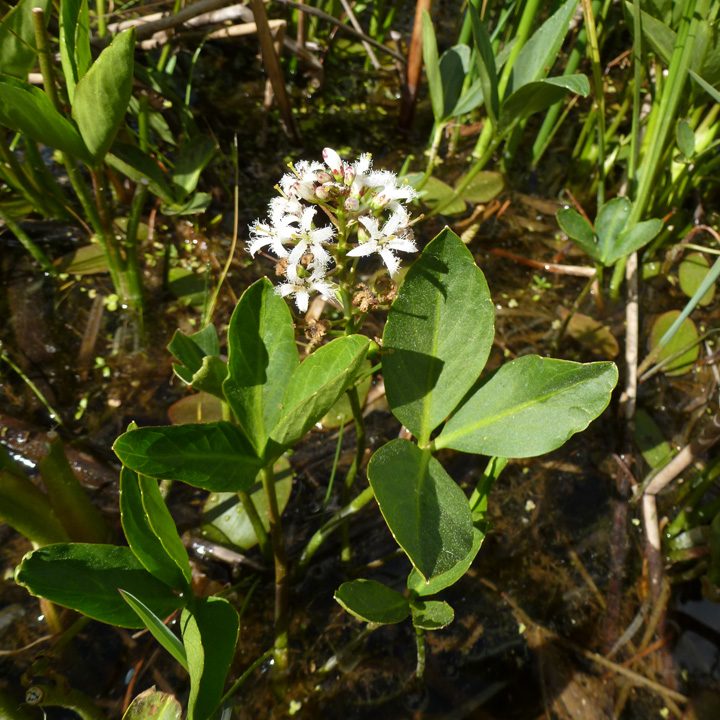
|
Family: Menyanthaceae |
PLANT: Perennial semi‑aquatic marsh or bog herbs with a creeping rootstock. LEAVES: alternate, compound with 3 leaflets; petioles 5‑20 cm long with enlarged sheathing bases; leaflets oval or oblong, entire, 2‑8 cm long with acute to obtuse apices. INFLORESCENCE: erect racemes ca. 10‑20 cm long with elongated naked peduncles. FLOWERS: on slender pedicels; calyx tube obconic, the lobes 3‑5 mm long; corolla white, the tube about as long as the calyx, the lobes 5‑8 mm long, the inner surfaces bearded with many thickened hairs; stamens erect, the filaments long, slender in one form, the other with short, stout filaments; pistil ovate, the stigmas 2, the style short if the filaments are elongate and long when anthers are nearly sessile. FRUIT: ellipsoid, ca. 8‑10 mm long. SEEDS: glossy light brown, 2.5 mm long, slightly flattened. 2n = 54. NOTES: A monotypic genus of circumboreal distribution ‑ rare in AZ. (Greek menycin = disclosing + anthos = a flower, with reference to the gradually expanding flowers in the raceme). Lindsay, A. A. 1938. Amer. J. Bot. 25:480‑485. REFERENCES: Mason, Charles T., Jr. 2001. Iridaceae. J. Ariz. - Nev. Acad. Sci. Volume 33(1). Cal deeply cleft; cor salverform, its lobes and throat densely and coarsely hairy within; ovary about 1/3 inferior; fr tardily dehiscent by 2 valves; glabrous, rather fleshy herbs from coarse rhizomes; lvs all basal, emergent, trifoliolate, the long petiole with a conspicuously expanded sheathing base; fls heterostylic, in a bracteate raceme terminating a shortly emergent, naked scape. Monospecific. Gleason, Henry A. & Cronquist, Arthur J. 1991. Manual of vascular plants of northeastern United States and adjacent Canada. lxxv + 910 pp. ©The New York Botanical Garden. All rights reserved. Used by permission. |
This project was made possible in part by the Institute of Museum and Library Services [MG-70-19-0057-19].
Powered by Symbiota



